In order to enjoy great entertainment with your family or friends, the TV or set is one of the best options. But to get the best picture quality and essential features, it is important to choose the model that meets your requirements and expectations. For your quest, find through our buying guide the best TV made for you.
Here is our commitment, to make sure that we provide the best user experience and content quality:
You can support us by using our links to make your purchases (at no extra cost to you)! This sometimes earns us a commission which allows us to remain independent. More about us
Our selection
"The Samsung QE55Q80A is a 2021 TV model featuring QLED technology with 4K UHD resolution of 3840 x 2160 pixels. Embedding a 55-inch screen, it…"
"Benefiting from a 4K UHD display and connected features, the Hisense 43A7100F could only offer you quality entertainment. It features a 43-inch screen with a…"
"Featuring a 65-inch screen, the Samsung 65QN90AATXXC stands out with HDR-compatible Neo QLED UHD 4K display technology. Taking advantage of a Tizen OS operating system,…"
"Philips 70PUS7555 is a 70-inch TV with an LED backlit LCD screen on 4K UHD display format. It performs with a Quad Core processor and…"
"The CHiQ L32H7A has a 32-inch HD LED panel. It's not crazy, but it's still a very good smart TV at less than 250 euros.…"
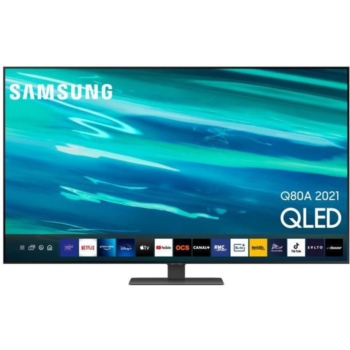
The Samsung QE55Q80A is a 2021 TV model featuring QLED technology with 4K UHD resolution of 3840 x 2160 pixels. Embedding a 55-inch screen, it has a 100 Hz slab with HDR treatment.
799 £ on BoulangerSamsung QE55Q80A has a 55-inch TV screen offering a 4K UHD resolution of 3840 x 2160 pixels with a frequency of 100 to 120 Hz. Benefiting from HDR processing, this model embeds a Quantum Processor 4K video processor with Tizen artificial intelligence. Equipped with a QLED LCD panel, it is HDR10+ compatible and develops light peaks up to 1500 nits improving the display contrast in all circumstances.
Establishing a diagonal of 138 cm, the Samsung QE55Q80A sports an ultra-thin 25 mm design and features a 60-watt 2.2.2 channel Dolby Digital Plus audio system. Comprising a breadth of connectivity, the TV consists of 3 HDMI2.0 ports, 1 HDMI 2.1 port, 2 USB 2.0, 1 internet port and other basic ports. As for connectivity, it has Wi-Fi 5, Bluetooth and Airplay 2 compatibility. It is worth mentioning that this model supports FreeSync technology and is Alexa and Google Assistant compatible.
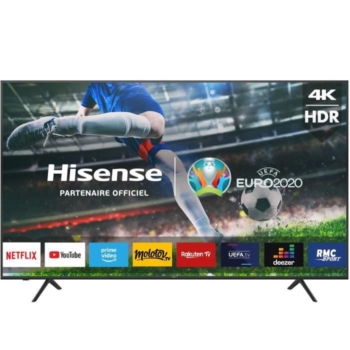
Benefiting from a 4K UHD display and connected features, the Hisense 43A7100F could only offer you quality entertainment. It features a 43-inch screen with a 50-60 Hz frequency.
282 £ on CdiscountThe Hisense TV has a 43-inch panel with 4K UHD 3840 x 2160 resolution with LED backlight technology and a 16:9 aspect ratio. In image processing, it performs with a Quad Core processor and artificial intelligence. Developing a display frequency of 50 to 60 Hz with a fluidity index of 1500 PCI, the TV supports HDR10, HDR10+ and HLG standards. It features a scene recognition system with an automatic display and sound setting for optimized viewing in any condition.
Embedding the 4K Upscaler function, it allows conversion of FullHD content to 4K UHD. The TV's structure features a sleek design with thin edges and a DTS Studio Sound stereo system with two built-in 14-watt speakers. To confirm its versatility, it includes a Smart TV Vidaa service with a large number of applications for quick access such as Netflix, Prime Video, YouTube and many others. Regarding its connectivity, it has 3 HDMI, 2 USB, Bluetooth and Wi-Fi. It also takes advantage of an Alexa voice assistant for voice control.

Featuring a 65-inch screen, the Samsung 65QN90AATXXC stands out with HDR-compatible Neo QLED UHD 4K display technology. Taking advantage of a Tizen OS operating system, it displays up to 120 Hz.
1 787 £ on CdiscountWith a sober design, the Samsung 65QN90A has a 65-inch VA LCD panel with a display frequency of 100 to 120 Hz and a definition of 3840 x 2160 pixels. It uses a built-in anti-reflection filter and Neo QLED technology consisting of mini LEDs to gain more precision in color and contrast ratio. Establishing a 16:9 display format, the Samsung TV supports HDR with Quantum HDR 2000 compatible HDR10, HDR10+ and HLG.
This TV model defines a connected function using the Tyzen OS operating system. The latter will allow ergonomic menu navigation while enjoying applications and services such as Netflix, Spotify, Prime Video, Youtube and many others. It also includes support for Google Assistant and Alexa for voice-assisted command control. Its audio system of 60 watts on 4.2 channels. To its connectivity, it embeds 4 HDMI including an HDMI 2.1, 2 USB ports, an Ethernet port as well as Wi-Fi and Bluetooth.
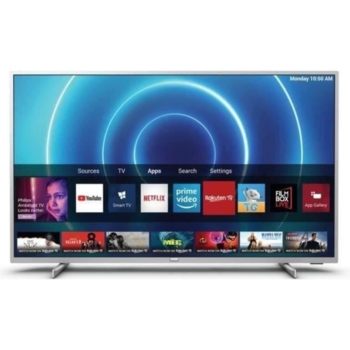
Philips 70PUS7555 is a 70-inch TV with an LED backlit LCD screen on 4K UHD display format. It performs with a Quad Core processor and supports HDR10, HDR10+ and HLG10.
520 £ on CdiscountPhilips 70PUS7555 has a 70-inch LED screen with 4K UHD resolution of 3840 x 2160 pixels. To its functions, the TV includes modern internet features of a smart TV and the like to provide the best daily entertainment and maximum TV enjoyment. Embedding a Quad Core processor, it uses a SAPHI operating system bringing excellent navigation by having access to many popular apps like Netflix, Prime Video and more.
Presenting a high quality look, the TV is equipped with a native 10-bit panel that can create a multitude of 30-bit colors by supporting HDR technologies including HDR10+, HLG as well as Dolby Vision. Its audio system is characterized by two speakers offering a power of 20 watts with Dolby Atmos technology. To its connectivity, it includes three HDMI ports, 2 USB, an Ethernet port accompanied by a Wi-Fi network.
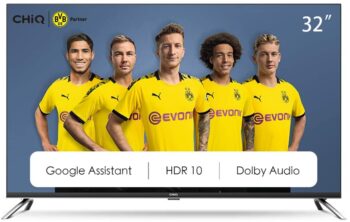
The CHiQ L32H7A has a 32-inch HD LED panel. It's not crazy, but it's still a very good smart TV at less than 250 euros. Running on Android 9.0 with a 4-core processor, it works wonders.
192 £ on AmazonThe CHiQ L32H7A has an 80 cm or 32 inch screen with a frameless design. The HD format offers a wider dynamic range, HDR 10, for images with a more accurate and precise high contrast. The visual experience is closer to the best thanks to a wider viewing angle and technology that exploits the entire diagonal. On the program side, you'll have access to the Google service, Android 9, as well as Amazon Prime Video or Netflix. This is perfect for spending pleasant moments with your partner or family.
For connectivity, you will have 2 HDMI ports (ARC/CEC) and a USB port, which is a bit of a limit. For less than 250 euros, you get a Smart TV with Wi-Fi and an Ethernet port for a better connection. Its plus is the Bluetooth function, which is very practical. Finally, immerse yourself in your movie with Dolby audio and an enhanced equalizer.
Any specific needs?
Your guide :
Rate this buying guide :By rating this buying guide, you are helping us to reward our best writers. Thank you!
| TOP OF THE TOP | NOT EXPENSIVE | TOP OF THE RANGE | Excellent | Inexpensive alternative | |

In accordance with our commitment, this buying guide does not contain any sponsored products. |
 9/10 |
 8/10 |
 9/10 |
 8/10 |
 8/10 |
| OUR SELECTION |
SAMSUNG QE55Q80A
|
HISENSE 43A7100F
|
SAMSUNG 65QN90AATXXC
|
PHILIPS 70PUS7555/12
|
CHiQ L32H7A
|
|
The Samsung QE55Q80A is a 2021 TV model featuring QLED technology with 4K UHD resolution of 3840 x 2160 pixels. Embedding a 55-inch screen, it has a 100 Hz slab with HDR treatment.
|
Benefiting from a 4K UHD display and connected features, the Hisense 43A7100F could only offer you quality entertainment. It features a 43-inch screen with a 50-60 Hz frequency.
|
Featuring a 65-inch screen, the Samsung 65QN90AATXXC stands out with HDR-compatible Neo QLED UHD 4K display technology. Taking advantage of a Tizen OS operating system, it displays up to 120 Hz.
|
Philips 70PUS7555 is a 70-inch TV with an LED backlit LCD screen on 4K UHD display format. It performs with a Quad Core processor and supports HDR10, HDR10+ and HLG10.
|
The CHiQ L32H7A has a 32-inch HD LED panel. It's not crazy, but it's still a very good smart TV at less than 250 euros. Running on Android 9.0 with a 4-core processor, it works wonders.
|
|
|
Screen size
|
55-inch
|
43-inch
|
65-inch
|
70-inch
|
32 inches
|
|
Display format
|
QLED UHD 4K
|
LED UHD 4K
|
Neo QLED UHD 4K
|
LED UHD 4K
|
LED HD
|
|
Display frequency
|
100 to 120 Hz
|
50 to 60 Hz
|
100 to 120 Hz
|
50 Hz
|
60 Hz
|
|
Audio power
|
60 watts
|
14 watts
|
60 watts
|
20 watts
|
16 watts
|
|
Connectivity
|
4 x HDMI; 2 x USB; 1 x Ethernet; 3.5 mm audio jack / Wi-Fi; Bluetooth
|
3 x HDMI; 2 x USB; 1 x SPDIF; 1 x Ethernet; 3.5 audio jack / Wi-Fi; Bluetooth
|
4 x HDMI; 2 x USB; 1 x Ethernet; 3.5 mm audio jack / Wi-Fi; Bluetooth
|
3 x HDMI; 2 x USB; 1 x Ethernet; 3.5 audio jack / Wi-Fi
|
2 x HDMI; 1 x USB; 1 x Ethernet; 3.5 audio jack / Wi-Fi; Bluetooth
|
Help us improve this table:
Report an error, request the addition of a feature to the table, or suggest another product. Thank you for your kindness!
We spend thousands of hours each year studying the major specialized websites, analyzing products of hundreds of brands and reading user feedback to advise you on the best products.
We are a product review company with a single mission: to simplify your buying decisions. Our research and testing helps millions of people every year find the best products for their personal needs and budget.
To support us you can: use our links to make your purchases (which often earns us a small commission), share our articles on social networks, or recommend our site on your blog. Thanks in advance for your support!
Don't just rely on the external appearance of your TV, also consider checking its reliability with the following criteria.
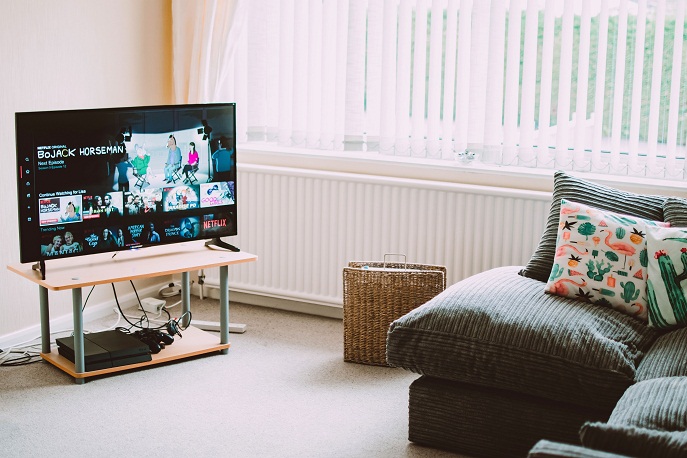
The display technology is the main criterion to consider when choosing a TV. On the market you will find two main categories of TVs, namely LCD and OLED.
LCD models are available in HD 720p, Full HD and UHD. Their greatest asset is their price. In terms of image quality, they are still far from matching OLED TVs due to a lack of depth in some colors, especially black.
More expensive than LCD TVs, OLED TVs nevertheless offer optimal picture quality, with bright whites and deep blacks. If you're extremely demanding when it comes to color rendition, you may want to consider buying an OLED model. Otherwise, it would be more beneficial to invest in an LCD TV.
The
size of the screen plays an important role in terms of comfort, but also in the decoration of a living room or bedroom
.
First, choose the dimensions of your TV according to the size of the room that will host it. It would be inappropriate to install a 55-inch TV in a relatively small room.
Next, determine the size of the screen by taking the viewing distance into account. If you plan to install your TV 2 m away from your sofa or bed, choose a 40-inch model, which is 102 cm diagonal.
On the other hand, if you plan to enjoy movie nights and video games 3 meters away from your TV, or even more, don't hesitate to invest in a 55-inch TV.
Note that the "optimal" viewing distance can be calculated by multiplying the diagonal of the screen by 2 or 2.5. For a 26-inch TV (66.04 cm diagonal), it is between 1.30 m and 1.65 m.
Contrary to
popular belief, definition and resolution are very different. The definition highlights the number of pixels of a screen, while the resolution, expressed in ppi (pixels per inch), takes into account the definition as well as the size of a slab.
To evaluate the sharpness of images provided by a TV, base yourself on the resolution. For a 55-inch UHD TV, it should be 53.4 ppi. In the case of a Full HD screen, the number of pixels per inch should be lower.
To simplify your task, you can only focus on the TV category. At a minimum, choose a Full HD 1080p TV.
For your information, certified 4K UHD displays, embedding HDR technology, are undoubtedly the best on the market, but they are extremely expensive.
In
choosing your TV, the shape of the screen can play a major
role.
Be aware, however, that, curved TVs do not provide any real advantage, except at the aesthetic level. It's true that they offer a slightly higher quality of immersion than flat models, but that doesn't always justify the purchase of these types of devices.
We recommend investing in a curved TV if you want to add a little originality to your living room. To save money, the ideal is to turn to a good size flat screen TV, offering an excellent resolution (Full HD or UHD).
Connectivity is a criterion not to be neglected, when choosing a TV. Although they are expensive, smart TVs offer many features and remain the ideal solutions for accessing content offered on the Internet, without having to rely on a computer or a mobile.
Smart TVs connect to a home network via Ethernet or Wi-Fi and allow you to browse the Internet, access VOD and various applications: games, sports activities, etc.
Although they are particularly interesting in terms of functionality, connected TVs are not essential, especially if you plan to receive DTT channels, play Blu-ray DVDs or play video games on your home console.
To enjoy the best picture quality and benefit from some features, such as smartphone control, we advise you to favor TVs with HDMI, USB, analog outputs and a Wi-Fi connection.
A
new TV will automatically increase your electricity bill. To reduce your expenses and contribute, to some extent, to the protection of the environment, it is therefore necessary to evaluate the energy consumption of your future equipment.
You should know that a TV consumes more or less energy, depending on its size. The consumption of a 32-inch TV set is about 50 kWh/year and 80 to 85 kWh/year for a 42-inch model, a difference of 30 to 35 kWh/year.
For your information, technological advances have made it possible to reduce the energy consumption of electronic devices in a relatively significant way. To optimize your electricity expenses, we recommend that you invest in a recent television set.
As you might expect, the TV is certainly one of the most used appliances in your home. You may even have more than one, in your bedroom, living room or any other common room. This context leads you to wonder about the energy consumption of the TV.
First of all, you should know that the energy consumption of a TV depends on its model: the display technology (LED, LCD, plasma, OLED or QLED) is mainly the determining factor because it affects the power consumption of the TV. On the other hand, the most modern technologies, namely OLED or QLED, are more economical compared to older ones, with an annual consumption of no more than 100 kWh. The energy performance of the TV is normally mentioned on its packaging. Also keep in mind that the standby function consumes electricity.
However, you should realize that it is mainly the TV's accessories that consume the most energy: DVD player, satellite/WiFi box, game consoles, etc. Rest assured, if you have to draw up a list of the most energy-consuming appliances in your home, the TV is not at the top of the list. To optimize the impact on your bill, you can adopt certain reflexes concerning your TV. If you have to buy a new one, choose modern models, which are more efficient and absolutely economical. When you are not in front of your TV, day or night, it is always recommended to turn it off instead of putting it in standby mode. Finally, for convenience, plug all your equipment into a single power strip, which you can turn on and off as needed.
In general, TVs are differentiated by their display technology, which allows us to easily classify them into these few types.

The first plasma TVs announced a real revolution in the world of image and sound. Today, this type of TV still equips many living rooms.
First of all, plasma technology offers exceptional image quality with particularly successful shades of gray and black. In addition, it does not require a backlight, which reduces eye strain to some extent.
However, it is important to note that these TVs are currently obsolete. Although some stores still offer plasma panels, you should know that major brands such as LG or Panasonic have abandoned the development of these for some years.
Regarding electricity consumption, TVs with this technology are the most energy consuming on the market. Investing in this type of device could therefore increase your ecological footprint and lead to significant energy expenses.
Advantages :
Disadvantages :
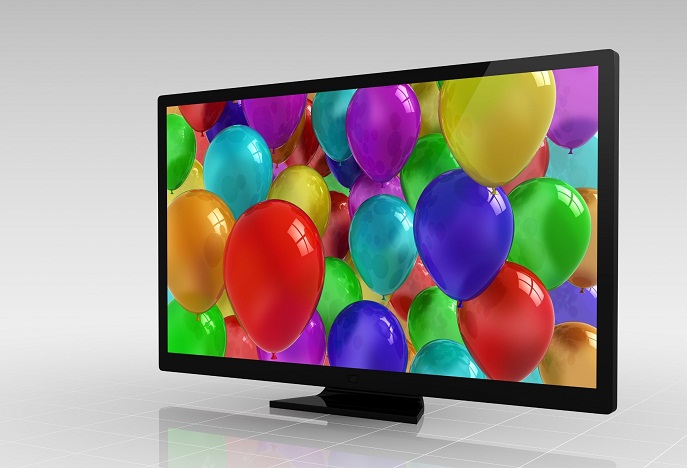
The
LCD TV uses pixels accompanied by backlighting. This type of TV offers decent quality images. It can be criticized for a certain lack of density in black, however this small detail should not bother the less demanding.
Regarding the size, the LCD TV is quite large because of its backlighting system. Nevertheless, it will easily find a place in a living room or a relatively cramped bedroom.
In terms of power consumption, the LCD screen is much less energy consuming than its plasma counterpart. It will therefore allow you to reduce the environmental impact of your home and make more or less significant savings.
Advantages:
Disadvantages:
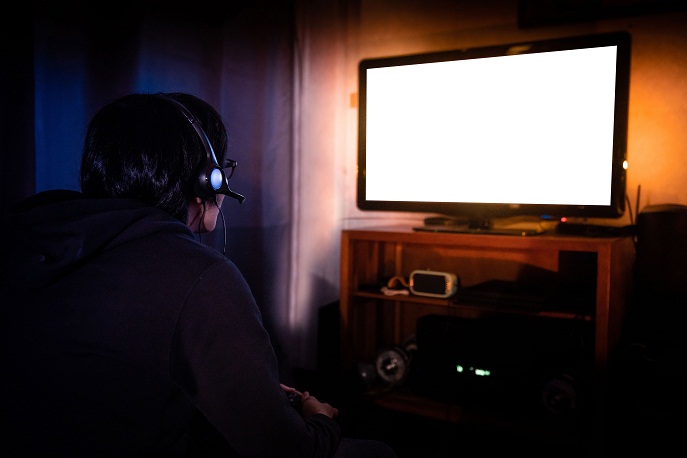
The
LED TV is equipped with light-emitting diodes whose main mission is to illuminate the pixels. This technology allows to obtain beautiful images, both precise and homogeneous.
Compared to plasma and LCD models, this type of TV is more compact, lighter and less energy consuming. It will allow you to make substantial energy savings and its slim design will not fail to offer a touch of elegance and sobriety to your home.
Pros:
Disadvantage:
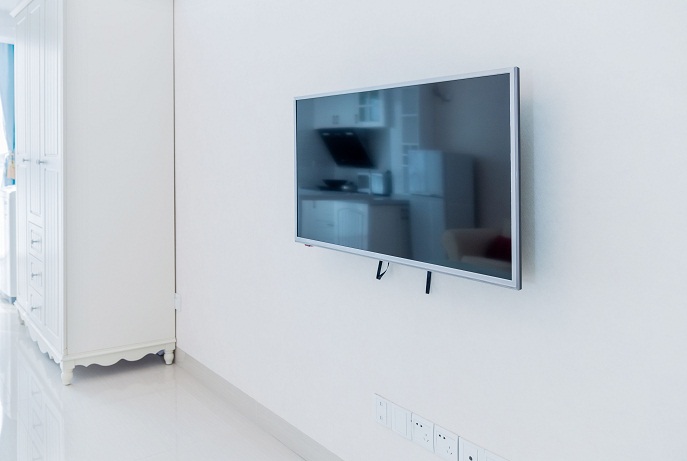
Appeared
in 2013, OLED technology offers the best image quality on the market. TVs using organic light-emitting diodes contain a chemical substance that lights up when in contact with an electric current. They are ultra-compact and stand out from other TVs by their depth of field and exceptional color shades.
For information, the OLED TV is less energy consuming than its LED counterpart. Nevertheless, the development of this recent technology is still relatively expensive for manufacturers, which has significant repercussions on the prices of their products.
Advantages:
Disadvantage:
The flat screen TV allows for optimal management of your space because it can be easily mounted on the wall, regardless of the room in which you decide to install it. In most models, the flat screen TV has the latest LED, OLED or QLED display technologies, among others a very high quality of the images broadcasted.
Through its structure, the flat screen TV broadcasts images in a straight way. Thus, viewing on the corners seems a bit more complicated. This circumstance presents itself as a factor favourable to eye strain. Some models of flat screen TVs have difficulties with intense brightness, which causes an unpleasant glare effect.
The main advantage of a curved screen TV is the viewing comfort. The main advantage of a curved screen TV is that it is comfortable to watch, as it offers an equal viewing distance for each part of the displayed image, and you will hardly notice any distortion in front of a curved screen TV. Thanks to its powerful display technology, the curved screen TV adapts to all light conditions.
As for its installation, the curved screen TV does not fit on a wall mount, or if but following some special precautions. Because of its refined design, the curved screen TV is relatively expensive compared to other models.
It is important for you to choose between a flat screen TV or a curved screen TV since the TV is an important element determining your interior decoration and guaranteeing your moments of relaxation. The decision will be made according to the management of your space, knowing that in both cases the wall mounting is not always possible. In terms of image quality, the flat screen TV and the curved screen TV will fully satisfy you.
While CRT TVs have been out of our living rooms for a decade, many people still cling to their old plasma screens. Although the latter provides a better picture quality than the imposing TV sets of the 80s and 90s, it is time to switch to a more reliable technology, namely LCD and LED.
LCD and LED TVs are available in different sizes (up to 55+ inches) and offer richer features and a much higher resolution than plasma-based sets.
The cheapest LCD and LED TVs offer at least HD resolution. As you move upmarket, you'll find sets that deliver Full HD or 4K UHD images.
While the first Ultra High Definition TVs were expensive, they are now relatively affordable and come with many interesting features. If you're planning to upgrade your audio-visual equipment, you won't need to spend a few thousand euros to buy a top brand 4K TV.
To benefit from optimal image quality, while saving money, opt for a Full HD screen as a minimum.
The latest TVs impress with their picture quality, but also with the immersive experience they offer. By purchasing a Full HD or UHD TV of a relatively large size (44 inches or more), you can immerse yourself in the world of your favourite series and films.
The problem that manufacturers are still working on is improving the sound quality. Of course, high-end TVs offer excellent sound quality, but for a better immersion we advise you to complement your device with a high-performance audio device. A 5.1 speaker should be more than enough to create a home cinema type setup.
Today's TVs provide you with exceptional picture quality, a unique immersive experience and a plethora of features. Some models, known as smart TVs, offer the ability to browse the internet and access content such as VOD or applications.
These "smart TVs" generally have more connectivity than traditional LCD and LED TVs. They can connect to a home network via Ethernet or Wi-Fi and can be controlled from a remote control or a smartphone.
Contrary to what you might think, new generation TVs consume less energy than their predecessors, despite being significantly more efficient than the latter.
If you want to reduce your electricity bill, the best thing to do is to invest in a new device. You should know that the difference in consumption between a 2016 LCD TV and one designed in 2010 can be as much as 20 kWh/year.
For information, the energy consumption of a TV depends largely on its size and display technology (LCD, OLED, etc.).
In our opinion, the best brands of TV in 2022 are :
Samsung - Founded in 1938 by Lee Byung-Chul, the South Korean brand started out in the sugar business, then in the wool business. It wasn't until 1969 that Samsung began manufacturing electronics, and the first product to go on sale was the TV. Today, the Samsung TV, as well as all the other devices of the brand, are ranked among the most powerful on the market.
LG - Created in 1947, the South Korean brand LG is known worldwide in the field of household appliances and multimedia. The subsidiary LG France arrived in the UK in 1991. It is one of the leaders in the manufacture and marketing of TVs, cameras, smartphones, washing machines, refrigerators, vacuum cleaners and dishwashers.
Panasonic - When it was founded in 1918, the Japanese brand still bore the name of its founder Matsushita. The group changed its name to Panasonic Corporation on 1 October 2008. From then on, the company has made remarkable progress in the audio-visual and household appliance markets, as well as in small domestic equipment.
Philips - Founded in 1891 by Gerard and Frederik Philips, the Dutch brand specializes in the production of household appliances, electronic personal care products, and mainly audiovisual equipment. With more than a century of experience, Philips is a reference brand.
Sony - Founded in 1946 by Akio Morita and Masaru Ibuka, the Japanese brand Sony offers a wide range of audio equipment, TVs, camcorders, cameras, storage media, computer equipment and smartphones. It is one of the best brands in the field of multimedia.back to the comparison table
The diagram below will help you to get an idea of the typical prices for each price range (entry-level, mid-range and high-end).
However, more expensive does not necessarily mean better.
We therefore advise you to always consult our ranking before deciding, rather than blindly relying on price ranges.
Choose a TV that is easy to use.
TVs are certainly getting more complex, but a smart TV interface should help you, not hinder you. If you need extensive training to find the right app, look for a model that's easier to use.
Make sure the location you choose is suitable for your TV.
If
you've chosen a fairly narrow location, measure the space carefully before ordering a set, and remember to look at the full dimensions of the entire assembly, not just the screen measurement
.
Think about the connection ports you will need.
If
you're going for a 4K TV, make sure its ports support HDMI 2.0, so it can accommodate other ultra HD sources in the future
.
Think about where you will put the cables.
The
various cables included (power cable, sound cable, picture cable...) will risk looking like a big mess rather quickly if they are not arranged properly. Especially if you have a range of connected devices at home, such as a Blu-ray player and a game console. Some TVs have special slots for wires to keep the overall order.
Beware of "HDR" labels.
High Dynamic Range (HDR) technology is now built into almost all 4K TVs, especially those from major brands. For many of us, HDR is a sine qua non for having the best TV possible. This is because when done right, HDR can provide a wider range of brightness levels from black to maximum white. You'll see more detail in the darker and near-white parts of the image. In addition, the display will offer more realistic lighting, including "specular highlights"-light reflections similar to the sun's reflection off a car's chrome bumper-that really make images stand out on the screen. But many manufacturers put the label on their products without offering true HDR quality.
Depending on the type of TV you have, you'll have the ability to cast content from a connected device (phone, tablet or other). To do this, download the latest version of Chromecast or Chrome, connect the TV and your connected device to the same WiFi network, and then cast the desired content; it will start streaming automatically.
Regularly dust your TV screen with a feather duster or a very soft cloth. If you notice that stains persist, dampen a cloth and add a few drops of white vinegar. Rub the surface of the screen gently without applying pressure. Otherwise, there are many cleaning solutions available in stores. In any case, the models in this comparison are easy to clean.
In addition to your budget, there are a few criteria that will help you find the right TV for you. These include display technology (LED, OLED, LCD, etc.), screen size, picture definition and resolution, screen shape, connectivity and power consumption. Also consider the intended location: sometimes a wall-mounted model is more practical.
To benefit from an exemption from the TV licence fee, you must be exempt from council tax and have a reference tax liability of 0. A disabled child who is attached to his or her parents' tax household but who owns his or her own home can also benefit from an exemption. This is also the case for people under 21 years of age and students under 25 years of age, if they pay council tax.
Every month we help more than 1 000 000 people buy better and smarter.
Copyright © 2022 - Made with ♥ by buyingbetter.co.uk
Your reviews and buying guides 0% advertising, 100% independent!